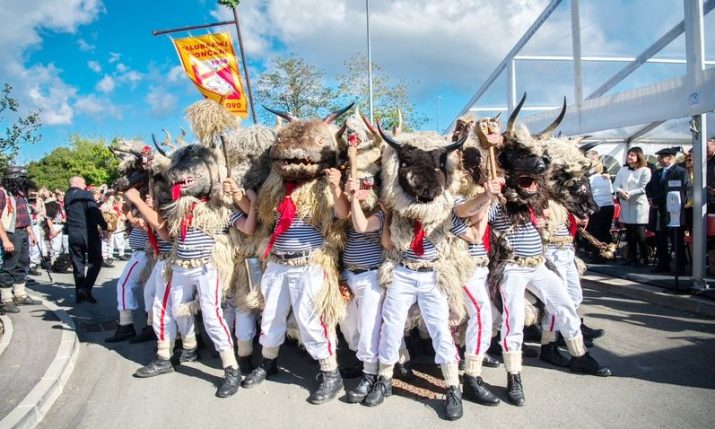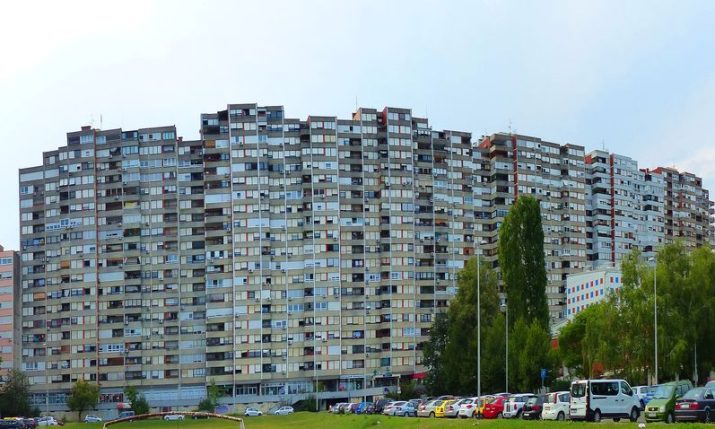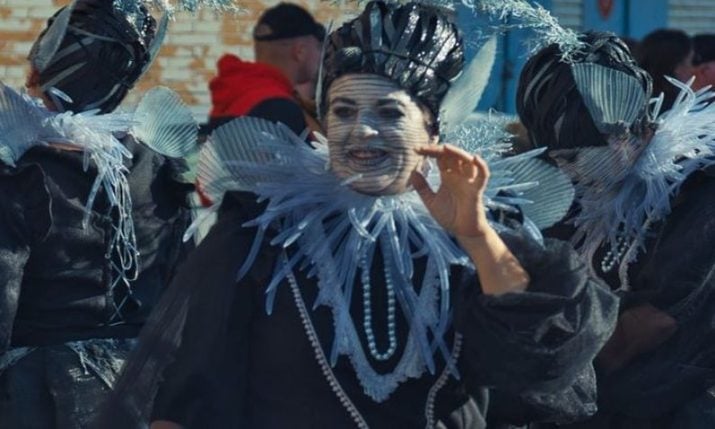Croatian Flora – The beauty of Opatija’s Camellias
- by croatiaweek
- in Entertainment
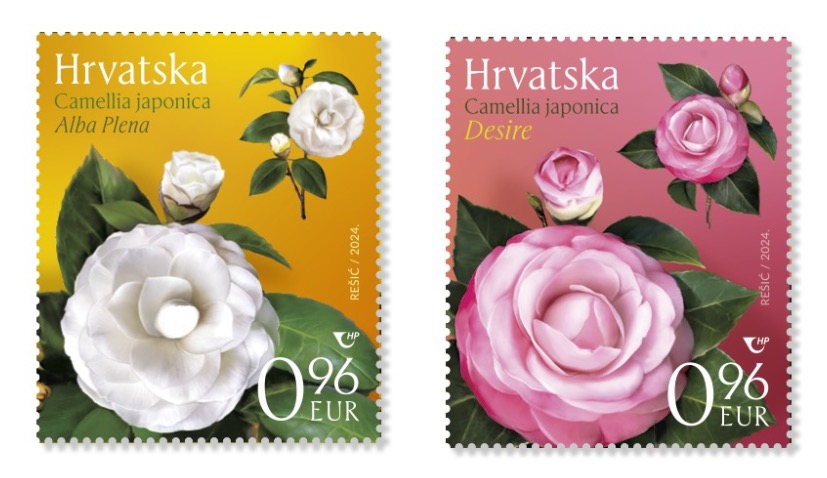
(Photo. Croatian Post)
New release of postage stamps from the “Croatian Flora” series
ZAGREB, March 20, 2024 – Croatian Post will release new commemorative postage stamps on March 21st from the “Croatian Flora” series featuring motifs of Opatija camellias – Rubra Simplex, Alba Plena, and Desire – which adorn numerous gardens, parks, and promenades in the area.
The stamps were designed by Sabina Rešić, a designer from Zagreb, and issued in sheets of 20 stamps with a print run of 25,000 copies per design, as well as in booklets of 10 stamps printed in 10,000 copies.
Croatian Post also printed three maximum cards with a print run of 700 copies per design. The nominal value of each stamp is 0.96 euros. Camellias on postage stamps can be purchased at post offices and on https://www.epostshop.hr/.
The release is accompanied by a first-day cover (FDC).
This text for the commemorative stamps was written by Antonija Cvetković, Director of the International Camellia Society, Camellia Region Croatia.
Camellia, Latin name Camellia, is an evergreen flowering plant from the Theaceae family, which includes shrubby and arborescent plants. The majority originate from Southeast Asia, China, and Japan, where they grow as indigenous plants.
Flowers can be white, pink, or red, up to 6 cm in size or larger depending on the species, with a yellow stamen in the center or without – all depending on the type of camellia.
The most numerous are Camellia japonica, while the plant used for tea production is called Camellia sinensis. It is presumed they originated from Tibet and spread to the southern part of China.
They have been cultivated in Europe for centuries due to the constant demand for aromatic tea and the health benefits of green tea.
There is also a species called Camellia sasanqua that blooms in early autumn. Many hybrids are created each year as experts cross different species, resulting in various camellias with blooms to enjoy throughout the year. Most new hybrids are developed in the United States and China.
A camellia tree can grow up to 10 meters in height. The root system is shallow and highly branched. The leaves are green, varying in shade, with round, pointed, or flat shapes depending on the species. Camellias require quality care: regular fertilization, acidic soil, good moisture drainage, ambient humidity, partial shade, and cannot tolerate intense midday sun, let alone strong winds and cold drafts for long periods.
Camellias were named after the botanist and pharmacist George Joseph Kamel, who brought them to Europe. Kamel was born in Brno, in present-day Czech Republic, and died in Manila, Philippines in 1706, at the age of 45, where he spent most of his short but exploratory life. Camellia became and remained part of the royal heritage of many European countries and still stands at the top of that pedestal today.
Camellia japonica Rubra Simplex
The beauty of the red flowers of this camellia species lies in the simplicity of their arrangement – the floral corolla consists of five to seven petals, with particularly charming protruding yellow stamens. The plant blooms from mid-winter to mid-spring. This camellia has a special story for Opatija. Iginio Scarpa (1794–1866), a wealthy Trieste-Rijeka businessman of his time, was an ancestor of Opatija on his mother’s side.
Having lost his beloved wife, Angiolina Sartorio (1801–1832), prematurely, in her memory, he built a summer residence, now known as Villa Angiolina, and after purchasing the surrounding land from the local Opatija villagers, he began systematically landscaping the surroundings, creating a luxurious promenade that still bears the name Park Angiolina.
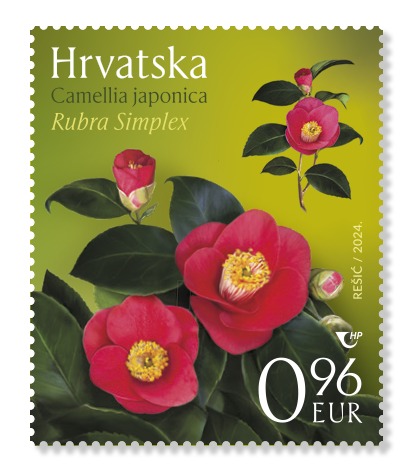
(Photo. Croatian Post)
Legend has it that his brother-in-law, Giovanni G. Sartorio, brought the first camellia seedling from Pillnitz Castle Park near Dresden in 1845 and gave it to Iginio, who planted it near the villa in honor of his late wife Angiolina. Rubra Simplex from Pillnitz can be seen on the Pillnitz park website. It is at least 246 years old, approximately 8.9 meters tall, almost 14 meters in diameter, with a circumference of about 32 meters.
During flowering, it has about 35,000 flowers. Given the climate in that part of Europe, it was always protected in winter with straw and wooden covers, and now has a movable glass dome. Opatija camellia japonica Rubra Simplex is one of the symbols of Opatija for the Camellia Enthusiasts Association.
It can be found in Park Angiolina and in many gardens of Opatija.
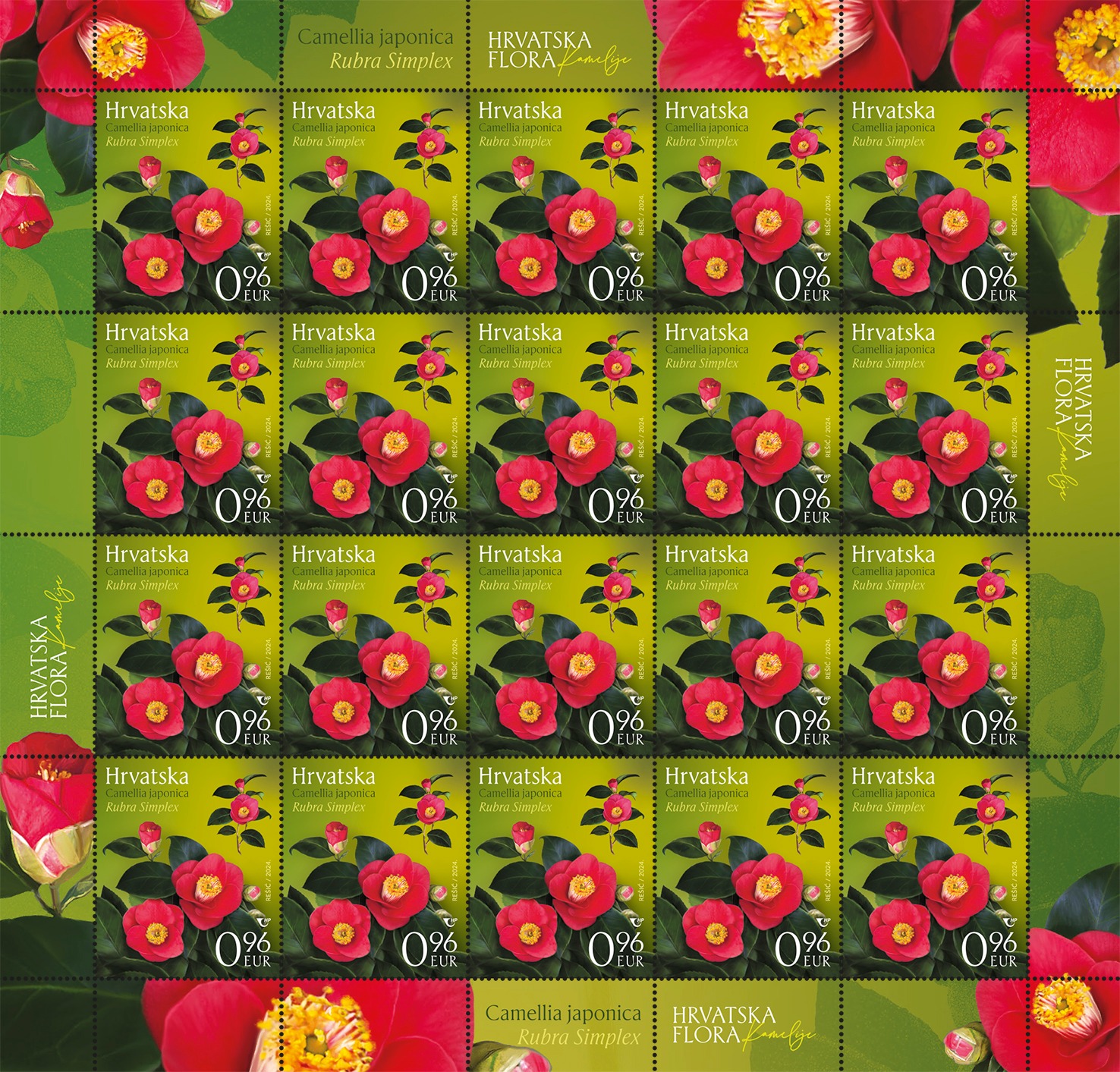
(Photo. Croatian Post)
Camellia japonica Desire
In the American Camellia Yearbook from 1977, on page 209, registry number 144, it is noted that this camellia was created by David Feathers from Lafayette, California, and first bloomed in 1973. It is of medium size, white-pink, edged with a deeper pink color, double-formed.
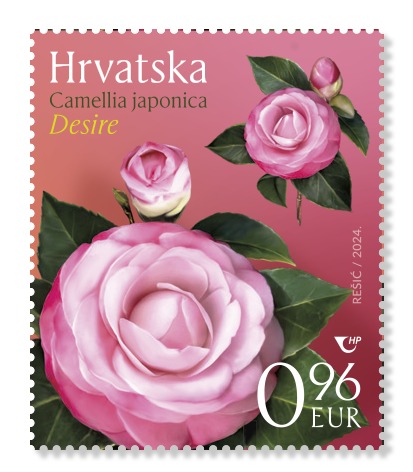
(Photo. Croatian Post)
The flower has 60 petals, sized 10 to 10.5 cm and depth of 5 cm. The flower stays on the bush for a long time. The plant’s growth is upright, dense, with dark green leaves 8.5 cm long and 5 cm wide. This camellia species is resistant to cold down to -10 or -15 degrees Celsius. The Royal Horticultural Society awarded the plant the Award of Garden Merit in 2002. It is grown in private gardens in Opatija.
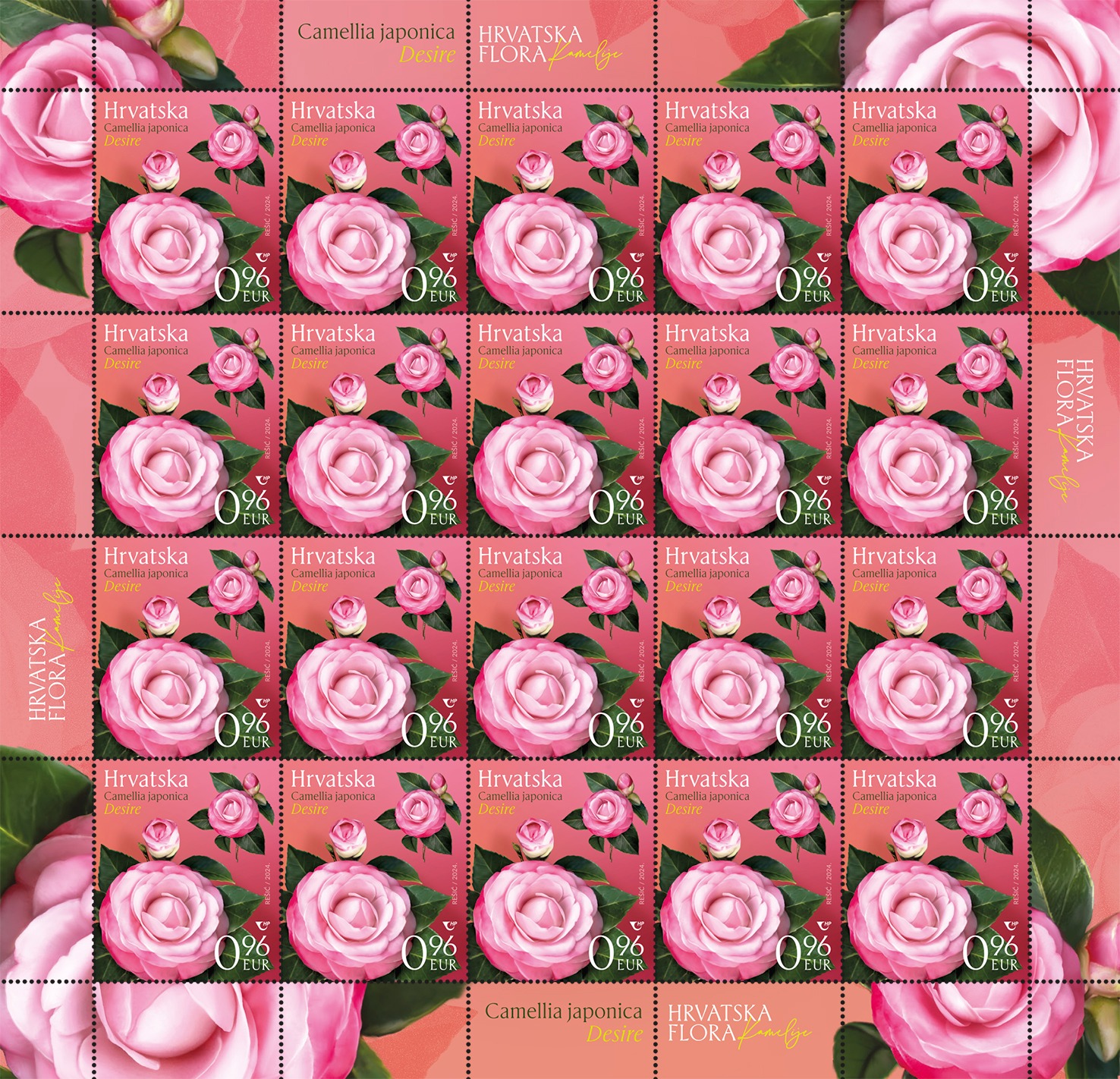
(Photo. Croatian Post)
Camellia japonica Alba Plena
This cultivar was brought to England from China in 1792 by Captain John Corner on the ship Carnatic owned by the East India Company. The homeland of this plant is the Guangdong province of China, and it is much older than the modern metropolis of Shenzhen in Guangdong. It was also imported into America around 1800 in New Jersey.
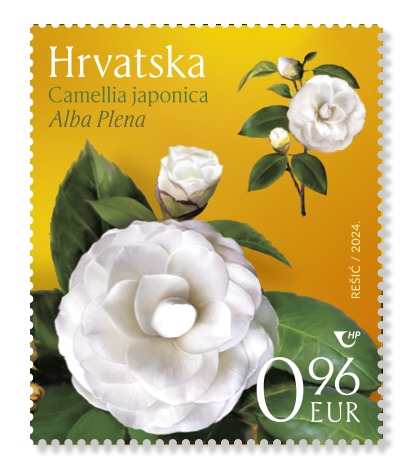
(Photo. Croatian Post)
It has a beautiful white flower that became a symbol of female excellence and women’s suffrage in the 19th century.
The flower is symmetrically double-formed, medium to large in size, with a diameter of 10 cm and a depth of 3.5 cm. The petals decrease proportionally towards the center.
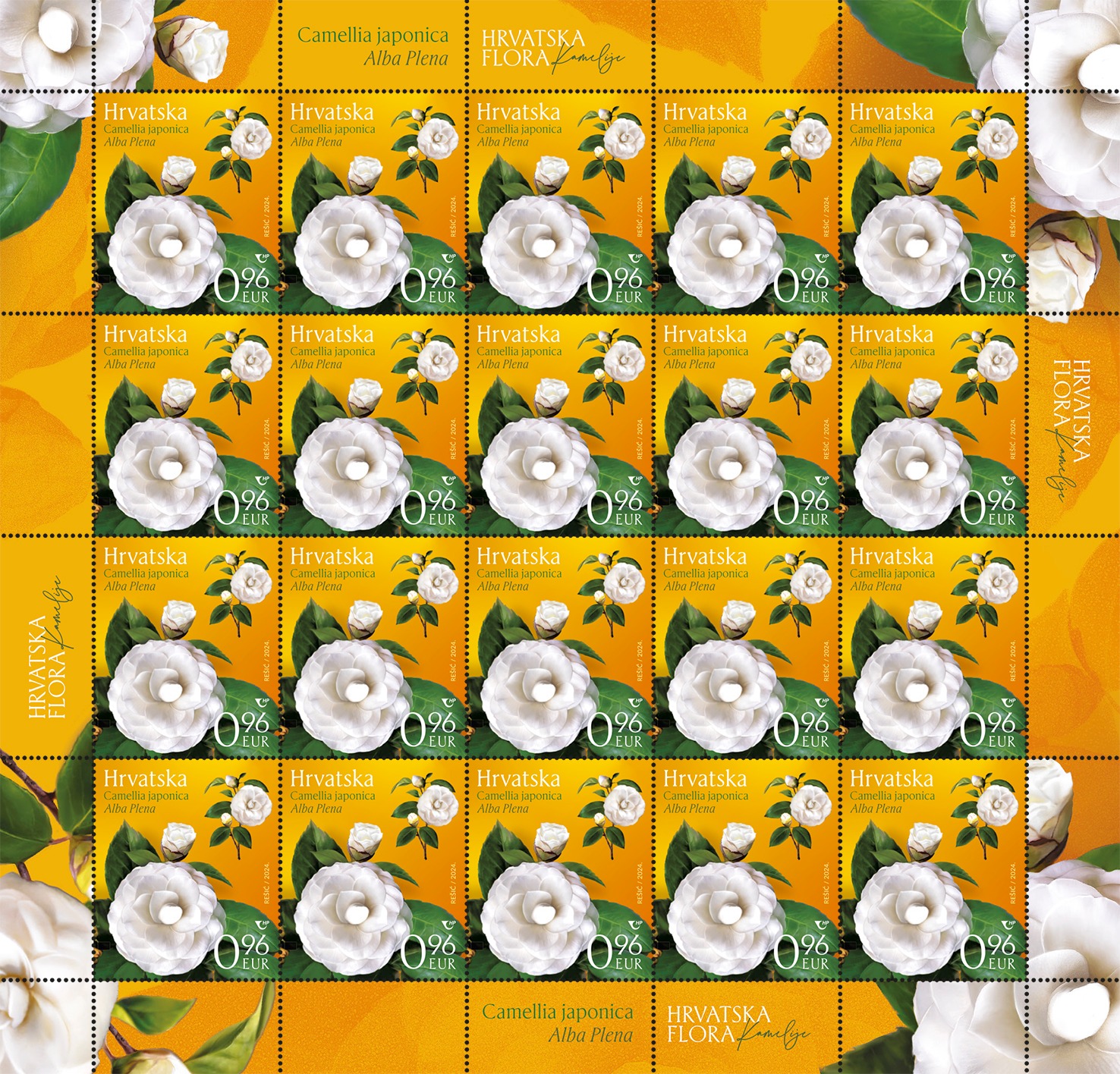
(Photo. Croatian Post)
The plant is of medium height and has light green leaves. It can also be found in the Opatija park and private gardens.


